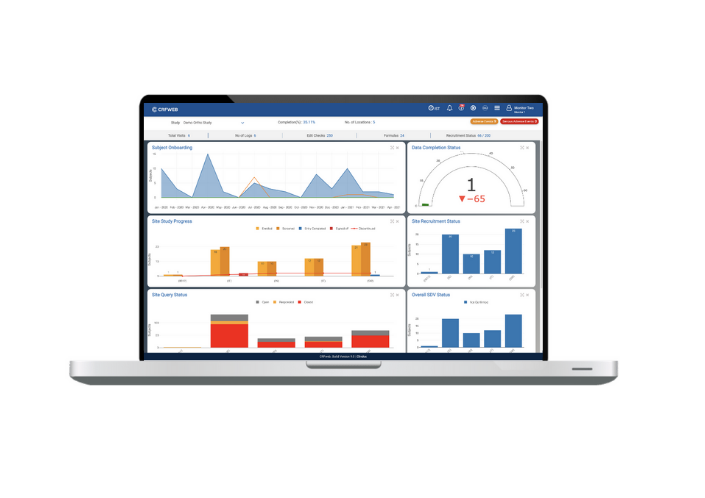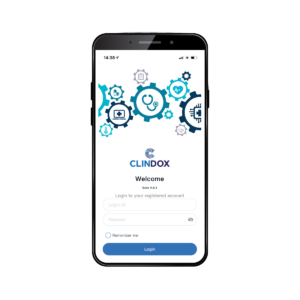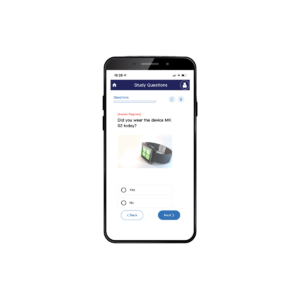ARTICLE 8: The business case for EDC – meeting the challenge of PMS & PMCF under MDR
In the eighth article of our series of articles on Managing Data and eClinical solutions for Medical Device Companies, the CRFWEB team discusses how PMS, and particularly PMCF, under MDR will impact on Medical Device Companies. We will look at the critical role EDC will have in helping them sustain profitable market access under the new regime and effectively leverage the business benefits of gathering high quality data over the full product life cycle.
We’ll explore the new challenges and opportunities presented by post-market surveillance and post market clinical follow-up under MDR

This article will take a closer look at:
- The impact of MDR for Medical Device Companies with respect to enhanced PMS and PMCF requirements to maintain CE-Marks
- Issues concerning resource scarcity and the the potential for regulatory bottlenecks over the next 3 years
- The squeeze on profit margins and the possibility that many low value legacy devices will be withdrawn from the European market
- How EDC will help Med Tech Sector realise the potential commercial benefits offered by enhanced PMS/PMCF
MDR: The phoney war is ending, time to mobilise
Like patriotism, military metaphors are usually the last refuge of the scoundrel but, for once, this one bares scrutiny. The MDR alarm bells have been ringing for what seems like years. Vendors and consultants have long been flooding the Web with a seemingly endless torrent of advice – advice that usually boils down to “You’ll be OK if you buy our products or services”. For many device manufacturers, it’s now time to act – to get plans and resources in place to ensure continued market access for their products in the EU. The world has changed, but as with Brexit (to mix metaphors) exactly how is only now coming into sharp focus. For many vendors, the most significant challenge is that of Post Market Surveillance. PMS is now a central pillar of the new regulatory landscape in Europe and will be essential for the retention of that hard won CE Mark.
In this article we’ll endeavour to unpick the key issues and to provide ballast to the argument that EDC will be an essential tool for PMS (Post-market Surveillance) and PMCF (Post-market Clinical Follow-up) under MDR for MedTech.
PMS under MDR – a recap
Under MDR, the expectation is that companies will be “Proactive and systematic” in their PMS activities. MDR is not, however, prescriptive; it defines the aims and objectives of PMS, identifies the non-negotiable elements of the PMS plan, expected ISO Standards compliance, and describes what’s required of supporting documentation. The manufacturer is granted considerable latitude in deciding on how it can best comply with their PMS obligations (which may include clinical follow-up studies, known as PMCF for higher risk classes) as MDR does not specify precisely what data you need to collect and how to collect it. It will be the responsibility of the Notified Body to audit the manufacturer’s proposals.
The need to provide meaningful data over the lifetime of a device to ensure ongoing safety and efficacy will clearly place significant additional burdens on manufacturers, most of which are a SMEs that may struggle to carry the cost of complying with these stiffer regulatory requirements. This need is driving many companies to consider EDC to support PMS and PMCF as a strategic platform.

Post Market Clinical Follow-up (PMCF) under MDR – the challenge
A core expectation of MDR is that the PMS plan will almost certainly feature PMCF – certainly for most devices of Class IIa and above. Prior to MDR, proactive PMCF activities, such as PMCF studies, were, by and large, limited only to devices in the higher risk classes. This was not an explicit objective of MDD but was, instead, an unanticipated outcome caused by device manufacturers exploiting shortcomings and loopholes in both MDD regulations and supporting MEDDEV guidelines. No surprises there. PMCF requirements are now far more exacting and many manufacturers – particularly at the lower end of the SME range – are discovering that their Clinical Operations resources and capabilities are inadequate to meet the challenges ahead.
Manufacturers will be expected to produce and a PMCF plan with detailed justifications of the activities included. The Notified Body will have sign-off on the plan and it will also be up to the NB to adjudicate on any request for exemption from PMCF activities based on claimed equivalence.
However, the Notified Body’s opinion may also be scrutinised by an EU expert panel. Earlier in the summmer (July 2021), one such panel challenged the NB’s evaluation of a Class III implantable device, deciding that there was insufficient data provided by the manufacturer to adequately support their claims. The NB is statutorily bound to consider the opinion and advise the manufacturer on possible remediating actions.
It’s important to note that PMCF (like PMS in general) is an ongoing, continous process and as such is not well suited to the traditional paper and spreadsheet approach that work for small scale, one-off studies – EDC, on the other hand, naturally fits well with open-ended data capture processes.
Sailing into choppy waters…
So, the medical device sector is experiencing a perfect storm of more exacting regulatory demands stiffer scrutiny, a continuing lack of clarity in official guidance all exacerbated by a widespread shortage of practical PMCF experience. Unsurprisingly, there has been no little confusion and concern as to what constitutes appropriate and compliant PMCF activities. Recent industry surveys suggest that around half of vendors think that meeting the needs of MDR – of which PMCF will likely be a major cost element – will account for at least 5% of future revenues.
Of course, PMS and specifically PMCF are not the only changes that will have a material effect on manufacturers. Other important activities that need to be addressed include:
Product classification based on the intended purpose. NB under MDR many devices will have moved up (and some down) down the classification system. Class I devices may well now be assigned to Class IIa (at least) and devices that are now attributed higher risk scores will be elevated from Class II to Class III.
Determination of general design and safety requirements as defined under MDR.
Ensuring that risk management and quality management systems are in place and fully complaint.
Entering and maintaining data in EUDAMED – this includes keeping the UDI (Unique Device Identifier) up to date, but more will be required, depending on risk class. EUDAMED is now expected to go fully live by the first quarter of 2022.
…but we’re on an even keel for now – so what’s the hurry?
The last quarter of 2020 saw a rush of certifications under MDD, with well over 9000 granted. All devices currently on the market certified under MDD will retain their certifications until 26th May 2024; after this date certificates issued under MDD become void. Finally, 26th May 2025 is the last date for end-users (e.g. hospitals) to put MDD-certified products into service.
So, then, there’s time enough? Well, no. As most companies will be uncomfortably aware, there are three very pressing reasons for being fully ready to move sooner rather than later with respect to complying with MDR requirements for existing devices:
- Any device improvement or modification can only be introduced providing the device fully complies with MDR requirements.
- Many devices that have relied upon equivalence claims in the past will no longer be able to do so under MDR – new data will be essential to maintain market access.
- The industry is anticipating significant capacity bottlenecks in the certification process as we head toward these cut-off dates. The onus will be on manufacturers then to ensure that their certification or re-certification activities are fully compliant to avoid delays and rework. There is a serious possibility that poorly prepared submissions will lead to existing devices being withdrawn from the market.

Scylla and Charybdis: the twin perils of resource scarcity and the squeeze on profits
It’s surely no secret that there is an alarmingly finite pool of scarce and expensive resources available to support the compliance process. The sooner manufacturers determine what the critical knowledge gaps are with respect to their products, what in-house resources they need and who their external partners should be, the sooner they will be able to plan effectively for retaining market access under MDR.
Whilst the European market for medical devices continues to expect a healthy CAGR of over 4% per annum over the coming years, ever increasing competition combined with intense downward pressure on prices from ever more savvy healthcare providers is squeezing margins uncomfortably. The reality is that the cost of MDR is one that many smaller companies, particularly, can ill afford, but it’s a cost that they simply cannot afford NOT to pay.
This is a no small concern; some recent estimations have suggested that up to 50,000 products (some 10% of the total) could be removed from the market simply because manufacturers can’t muster the bandwidth or resources to meet the challenge. So, what’s the solution?
PMS & PMCF under MDR – the central role of EDC
You’ll be under no illusion by now that PMS under MDR, and specifically PMCF, will vastly increase the amount of data collection, processing and analysis needed to retain the CE Mark. To continue to rely upon traditional paper and spreadsheet methods to keep a product on the market is clearly untenable and the need to invest in EDC to both control data costs and to ensure the levels of quality necessary to comply with MDR is surely undeniable.
Deciding to invest in an EDC system as a core strategic asset will allow you to:
- Straightforwardly integrate your data platform with your risk management and quality management systems – seamless integration of these critical systems will massively support and simplify MDR compliance
- Automate your data collection through deploying eCRF and patient/subject tools such as ePRO and eDiary for PMCF studies. Benefit from both significant reductions in data collection costs and quality improvements.
- Develop a single high quality data repository to support ongoing PMS, product development, marketing and future equivalence claims for successor products.
- Comprehensively leverage the wider commercial benefits of PMCF.


PMS and PMCF – the wider commercial benefits
- If you’re not moving forward, you’re heading to the back
Although MDR mandates a focus on liftetime safety and efficacy, having an ongoing understanding of real-word clinical use and performance is crucial to product development and marketing. Both PMS and PMCF supported by EDC will provide quality data will allow you to understand how effective your device is and how it can best be deployed in the patient population. PMCF is also a great vehicle for obtaining data on possible off-label uses. It can also help you understand how to improve user information, develop better device settings, make functional improvements, or identify possible new indications. Emerging technology tools such as eDiary and ePRO are ideal for many types of PMCF survey.
- Making the business case
It’s not ONLY about EDC to support PMS or PMCF under MDR. Important end-users may sometimes seek a higher standard of data and analysis than that needed to retain market access. As many vendors will attest, having that all-important CE Mark does not necessarily guarantee the business. Customers can often be sceptical about a product’s clinical or economic value, and this can seriously impact on both uptake and the price that can be charged. Collecting data on clinical performance and economic impact will only support the business case for a device. Performance comparisons with competing devices that stand scrutiny of peer review can clinch the deal as well as provide useful collateral in the form of papers published in scientific journals and/or presented at conferences.
- Staying connected with your customers
Most devices are expected to be on the market for many years, producing demonstrable health benefits at a justifiable cost and the best way to know that this continues to be the case is to stay connected with both physicians and patients. PMCF via EDC tools such as eDiary and ePRO hugely simplify the time and resource consuming business of developing and maintaining productive relationships with users.
How CRFWEB can help you
Clindox has a natural advantage over many of our competitors as we can leverage the benefits of:
– Long established, low cost-base development and support centres of the highest calibre
– High degree of sponsor self-sufficiency for study builds (with cost-effective client onboarding processes and expert support as required)
– Solution stack delivered through a simple, flexible SaaS model
Objectively, cost-plus – the true driver obscured by the smoke and mirrors of pricing plans – favours our offer and to this end you will find our proposals will be far simpler than any of our competitors and notable by the absence of arbitrary, hard-to-justify significant variability.
All in all, we know that with our low cost-base and our ongoing commitment to self-sufficiency, simplicity and transparency, we will always provide an excellent value proposition without compromising on features or quality… whichever sector you’re from, and whatever your study or investigation needs are.







